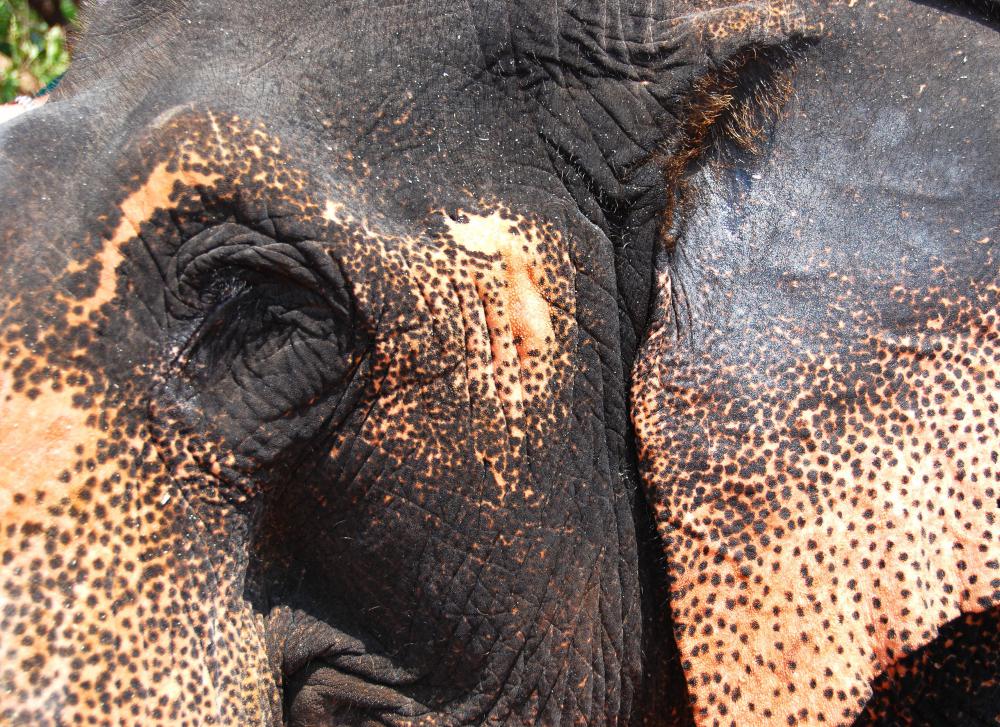At WiseGEEK, we're committed to delivering accurate, trustworthy information. Our expert-authored content is rigorously fact-checked and sourced from credible authorities. Discover how we uphold the highest standards in providing you with reliable knowledge.
Who is Ganesh?
Ganesh is arguably the most beloved Hindu deity of all. Eldest son of Lord Shiva the Destroyer, and his wife, Parvati, Ganesh is the god of wisdom, scribes, learning, and the remover of obstacles. Before any undertaking is begun, a prayer to Ganesh is said to ensure success.
Ganesh appears as a gentle, pot-bellied figure with the head of an elephant, four arms, and a broken tusk. He is most often depicted as sitting with one leg folded beneath him. In three of his hands he holds various objects that are symbolic tools for enlightenment: a pasam or rope, goad or axe, and a bowl of rice of or a sweet dessert ball.

The pasam or rope has three braids, each braid representing a different cautionary lesson: arrogance, Maya or the illusionary nature of the world, and ignorance. The goad is a staff used to herd elephants and reminds the devotee to steer clear of a self-defeating path, while the axe represents the ability to cut unhealthy attachment to the material world. The rice or sweet dessert represents the reward, or the sweetness of living in enlightenment, and the fullness of wisdom. It promises happiness in return for devotion.
Ganesh's fourth hand is always free, palm extended in a blessing.
Ganesh's potbelly is bound by a cobra, which represents Shiva, reminding us Ganesh is Shiva's son, while Ganesh's vehicle is a mouse, representing not only how much importance a wise man gives to the tiniest of creatures, but also agility and resourcefulness.
There are many legends as to how Ganesh ended up with the head of an elephant. In one, Shiva was away at war and Parvati desired someone to stand guard while she bathed. She created an ordinary boy, Ganesh. She instructed him to disallow anyone to enter. When Shiva returned home, the boy faithfully blocked the way. Enraged, Shiva cut off his head. Parvati came out and saw what he had done, grieving over her son. Shiva relented, promising to attach the head of the first creature he came upon, which was a baby elephant. Shiva cut off the elephant's head and placed it on the boy, bringing him back to life. Parvati wasn't quite satisfied so Shiva further blessed the boy, decreeing that all shall pray to Ganesh before enlisting any undertaking.
To this day faithful Hindus everywhere send a prayer out to Ganesh before starting a job, beginning a relationship, or undertaking any new project. Ganesh lovingly represents domestic harmony and happiness and his picture hangs over many doorways, guarding the entrance from harm and removing any obstacles from the path towards success.
AS FEATURED ON:
AS FEATURED ON:











Discussion Comments
There are so many ways of looking at Ganesh. This is a good one.
@turquoise-- I'm not too sure about other Hindu Gods and Goddesses, but yes, Ganesh and Vignesh (also meaning Ganesh) are very common Indian names. Ganesh actually has 108 names! The names refer to his characteristics as a God and his physical characteristics.
People also take the formal names of some of the Gods and shorten them when they want to use them. For example, Vignesh is actually Vigneshwara and literally it means Lord of all obstacles.
My friend's name is Ganesh! And I think it is really referring to Ganesh, the Hindu elephant God. Is it common to use name of Gods as names for people in Hinduism?
I visited India some years ago and was lucky enough to see "Ganesh Chaturthi," a week long festival in celebration of Lord Ganesh's birthday.
They had beautiful idols of Ganesh pretty much everywhere and I think the families decorated the idols themselves. At the very end of the festival though, they took the idols and immersed them in the river.
There was a lot of singing and chanting for Ganesh during the festival too. People just joined in the procession and danced in the street to drum beats! What fun! I will never forget it!
I find high-fiving Ganesh to be quite helpful.
Post your comments